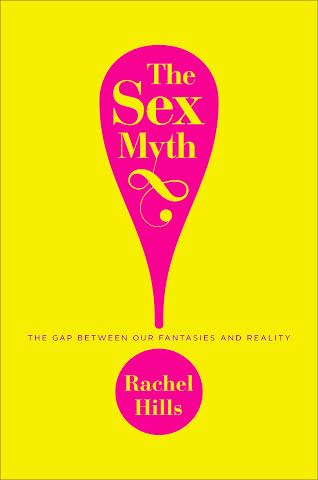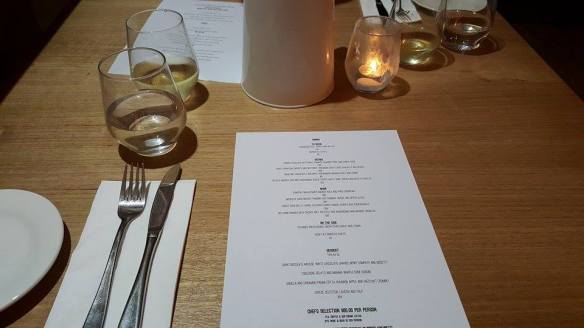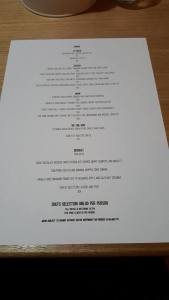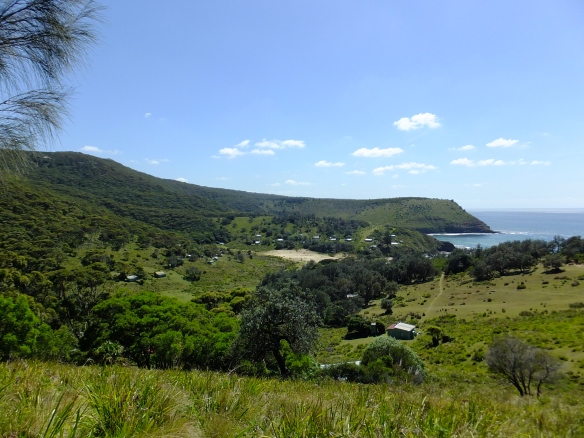
Image via rachelhills.net
She lives in New York and writes about sex – a lot – yet despite the obvious parallels, Rachel Hills is no Carrie Bradshaw. Rachel Hills is a passionate feminist, critic of pop culture stereotypes, and a sceptic of the media’s portrayal of sex. Her work has been featured in countless publications, both in print and online, and most recently she landed a book deal with major publishing company Simon and Schuster. Her first book, The Sex Myth: The Gap Between our Fantasies and Reality, is due to be released in Australia in July. She states that at the core of her writing is a “desire to explore ideas”.
We’ve spoken once before, we pinned it down to around 3 years ago. Back then Hills was living in London, skyping me from her flat; she was interviewing me for research for her book. This time around, it’s me asking her the questions, hoping that my nerves don’t show through too much. As the skype call connects, I remember the sound of Rachel’s voice, and my nerves relax a little. This time she’s in New York, I hear some noises in the background, and I imagine at she is out at swanky Manhattan event.
Hills appears to have the dream career of any journalism student. However it didn’t happen by chance. She’s successful, talented, determined, and incredibly hard working. Hills began her career, after graduating from the University of Sydney, as a freelance journalist. Over the last decade she’s written hundreds of articles, all while working various jobs, making appearances for public speaking events, and studying her post-graduate degree. Hills’s work has taken from her Australian homeland, to London, to New York- where she currently resides. Although Hills says that “it didn’t quite happen as directly as that”.
Hills reveals that things didn’t go quite to plan after graduation, but “it never does” she laughs. She describes her entrance into journalism, as “non-traditional”, or at least it was considered then. In 2004 she worked as the Editor in Chief of a project called electionTracker, which sent four young journalists around Australia in campaign buses alongside the major political parties. Hills says that it was around this time that she began “submitting articles to publications”. She says that it was working with other young writers, writers that she describes as “extremely talented”, that she realised “I could do what they did”. A lot of her freelance work was for magazines such as Cosmopolitan, which she believes is the perfect venue in which to discuss feminist ideals. Hills explains that women’s magazines are “essentially a media conversation about what it is to be a woman” and by being a contributor to such publications you can create new conversations, “ones that I think can be really helpful for people”.
I ask Hills what it feels like now that her book is so close to its release, “very exciting and very scary” is her response. It’s been 8 years since she came up with the idea, and 7 since she began working on it. She says it’s funny in retrospect, recalling an old blog post in which she says, “this book could take an entire year or two to write, surely it should only take six months”. She reveals that she felt a sense of hopelessness at times, and that the lengthy writing process often led her to question her value as a human being. “To understand that sometimes things don’t happen as quickly as you want them to”, was a personal lesson, says Hills.
It wasn’t until after a late night conversation with her friend ‘Monica’, that Hills turned her pen towards the topic of sex. They were walking home from a party together, Hills recalls Monica confessing that she hadn’t had sex in almost two years. She turned to Hills and said “you know Rachel come May, it will be two years since I’ve had sex, and it will be one year since I kissed someone”. It was this revelation, eight years ago that led Hills to the concept of The Sex Myth. Hills admits that she never believed the sensationalised narrative of young people hooking up with strangers every weekend, which the media portrays as normal. However she did buy into the more “subtle, insidious undercurrent, that to be a socially successful young person meant being sexually active”. When someone who Hills perceived to very socially successful, “wasn’t having sex in the way we were told we were supposed to”, she was shocked. Hills has spoken in past interviews that in her 20s she felt like sex came easily to others, while describing herself as a “secret sexual loser hiding in the corner and hoping that no one would notice that I wasn’t ‘normal’”.
Hills undertook her own quantitative research for the book, including over 200 interviews and over one thousand emails. Her research found that not only is there not really a ‘normal’, pretty much everyone is normal, in that most people worry they are doing something wrong when it comes to their sex lives. Hills says the motivation for her research was to find out the thoughts of twenty somethings when it comes to sex. “The point is not for you to parrot my theories back to me. The point is for you to tell me what you think”, she says. Hills understanding of sex changed her in more ways than just one, researching The Sex Myth. She says she wasn’t alone in her realisations, lots of those interviewed worried that they weren’t living up to the media’s portrayal. “It made me realise that I wasn’t alone, not just in feeling frustration and anxiety about not living up to the media ideal… but in my more specific insecurities about being a 20+ virgin”, recalls Hills. Her experience as a twenty something virgin wasn’t the average; most people have sex for the first time in their late teens to early twenties, but it happened more than what she thought. She’s sure that she had a few friends that shared her experiences, but “it just wasn’t something we talked about”. Hills argues that sex isn’t bad at all, however it is the inflated ideal of sex as a measure of a person’s success, that causes so many people to become anxious around the subject. “It’s the fact that sex is positioned in our culture as being something that is so vitally important to who we are”, says Hills.
Hills also argues that the media’s sensationalised view of sex is too narrow and excludes particular types of sexual activity. She says while researching she learnt a big lesson, which would have allayed a lot of her younger self’s anxieties, and Hills believes it would also help a lot of other people’s insecurities. Which is that, too much importance has been placed on penetrative sex. “Penis in vagina sex isn’t the only valid – or most important – type of sex. Knowing that would have helped me because I wouldn’t have been so concerned about whether I’d done or not done that particular sexual act”, Hills explains. Again Hills reiterates, “I’m not saying intercourse is bad”, just that we would as a society benefit from not placing so much significance on it. Hills says that by doing this not only would we destigmatise sexual acts that aren’t considered heteronormative, but it would also “reduce the pressure people feel to orgasm” in that particular sexual act. Hills also believes this is important for couples as they tend to “measure their intimacy through how often they engage in penetrative sex”.
Now that she has a book under her belt, I asked Hills if she feels like she’s ‘made it’. “It’s really funny that you ask that, because I actually don’t”, she replies. She confesses that she felt more like she’d ‘made it’ when she was still living in Australia, five years ago. Hills feels that in terms of making the book a success, she has another mountain to climb. She says, “It’s this kind of scary precipice of will my dreams come true, or will they kind of fall into oblivion?” Hills hopes the book connects with an audience and opens new doors for her, in terms of different types of writing. Hills says she’d like to write another non-fiction book, but chose to keep the subject a secret “it hasn’t got anything to do with sex” she adds. Hills believes that The Sex Myth is better, in terms of writing and research, than anything she’s written before. “It’s the most worthwhile kind of writing that I could be doing” concludes Hills.
Rachel Hills’ first book, The Sex Myth: The Gap Between our Fantasies and Reality, is available in Australia on July 29th (Penguin Books), and on August 4th in America (Simon and Schuster).
Image via rachelhills.net









